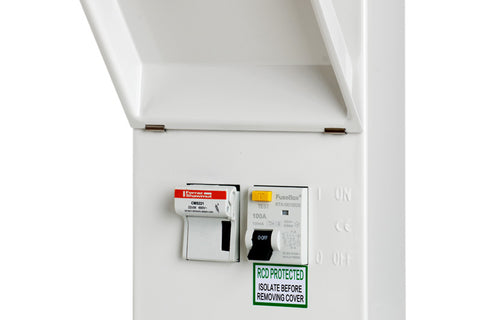Surge Protection For EV Chargers
Surge Protection For EV
We are already quite aware of the effects and challenges of installing EV charges regarding RCD requirements and earthing, but how much consideration is given to the surge protection requirements of these installations?
Although surge protection is not mentioned specifically in section 722 of the wiring regulations section 700 states that the absence of reference to the exclusion of a part, a chapter, a section or a regulation means that the corresponding general regulations are applicable. This means that in terms of surge protection, section 443 applies.
To meet the requirements section 443 in the second amendment of the BS 7671:2018 wiring regulations, such protection must be installed, where overvoltage could:
i. Result in serious injury to, or loss of human life, or
ii. Result in failure of a safety service, as defined in part 2, or
iii. Result in significant financial loss or data loss
Breaking these requirements down, indent one can apply to EV charger installations in some circumstances. It is common practice now to see EV chargers contacting loss of neutral safety devices, which are used to disconnect the car charger from the PME supply in the event of a loss of neutral to the installation. These devices are used, as in the worst-case scenario of a loss of neutral, it could lead to the car itself becoming a live conductor, possibly leading to injury or death.
Loss of neutral detection devices are there to notice the rise in voltage which follows a loss of neutral and disconnect the supply, but unlike a surge device, they detect long duration overvoltage over a period of seconds, meaning that they will not be activated by a surge, but the short duration overvoltage, although wont cause nuisance tripping of the device, can instead degrade the device and cause damage. Which could lead the loss of neutral device not disconnecting the car in the event of a fault, leading to a potential risk to life. Therefore, if an EV charger is being installed where this technology is utilised, an SPD should be installed.
I do not see any implications that indent two would apply to the installation of EV chargers, but indent three certainly can apply in more commercial EV charging installations, where the sensitive components within the EV charger itself can be damaged by overvoltage and cause a significant financial loss to the owner of the chargers.
By their very nature, EV chargers are both sensitive (limited impulse withstand capacity) and exposed to overvoltage. In fact, quite a few EV charger manufacturers will specify that an SPD should be installable or mention surge protection in the warranty details. With the current of installing EV chargers, without considering the cost of the car that is connected to them, the installation of a surge protection device to provide additional protection would be a sensible idea in any installation.
We will also have to give consideration to the installation that the EV charger is fed from. We have to consider that any cable that enters an installation can bring with it the risk of overvoltage, the effects of nearby lightning strikes and switching surges that can cause damage to the lectical installation along with the EV charger unit. So, by installing an SPD on your EV charger distribution board, you will also be protecting the installation from any overvoltage that could be transmitted from the EV charger, as well as protecting the EV charger itself.
We couldn’t finish this article without also giving a mention to installations with external lightning protection systems. EV installations are leading to cables being exported from distribution boards to external circuits. When a building has an external lightning protection system, we have to consider lighting protection zones. Any cable that crosses from lightning protection zone 0 (outside) to lightning protection zone 1 (inside) requires a type 1 SPD, as that cable can allow lightning to enter the structure.
This mean that if you’re installing an EV charger on a building with a lightning protection system, when a cable is taken from a distribution board to supply the charger, a type 1 SPD will be required on the distribution board to meet the requirements of BS EN 62305.
We hope this information was useful and if you need anything else or need a copy yourself we have a website dedicated to EV Chargers.
https://www.electricvehiclechargers.shop/
Take a look at our SPD's and boards in stock and available for next day delivery!











